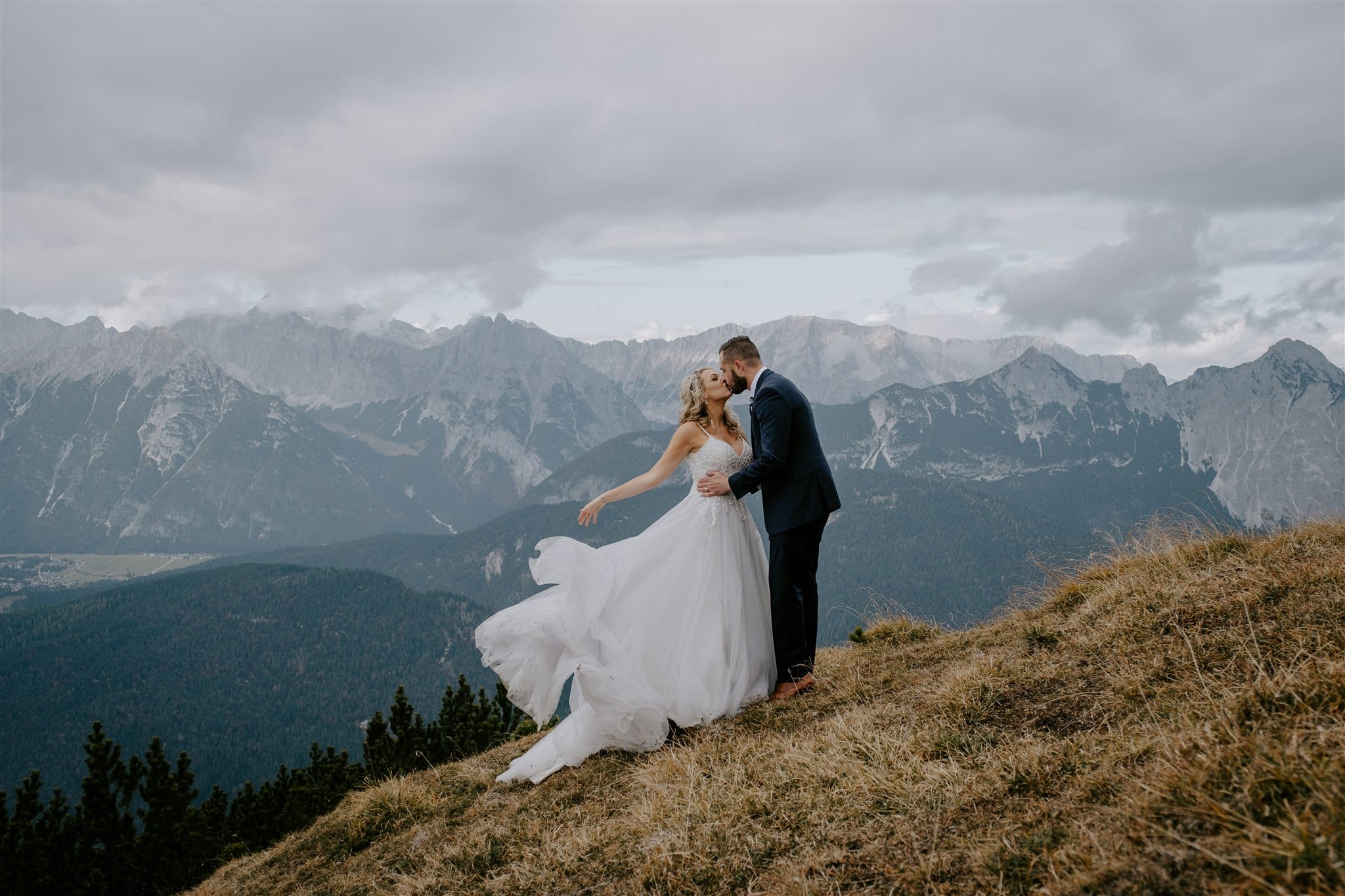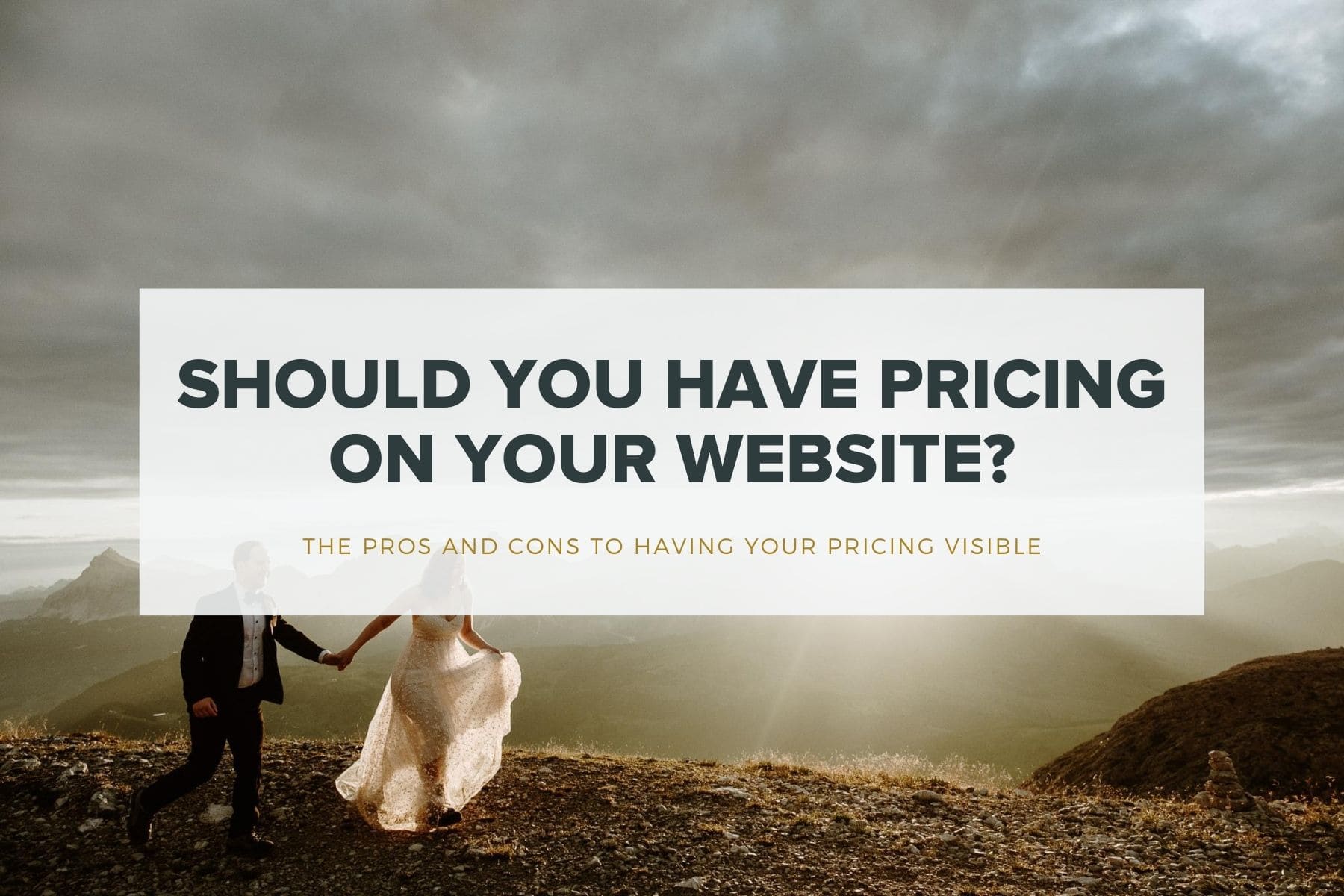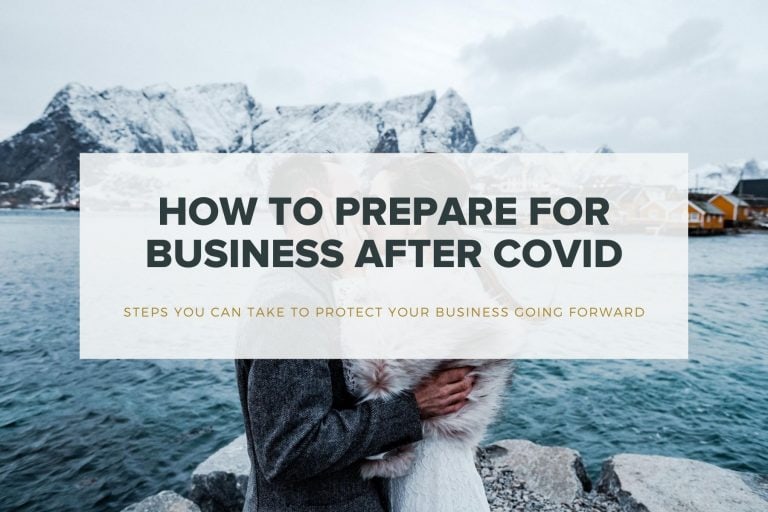Should You Have Prices On Your Website?
There aren’t many topics that divide the opinions in a room like a conversation about pricing does. And not just how much you should charge, but also whether you should have prices on your website.
When I was just starting out, I was taught that having prices on your website was a bad idea. The overall opinion from most people I spoke to at the time was that potential clients should contact you in order to get your prices because it gave you the chance to find out more about them (and whether they were a good fit) and also it let you explain more about the value of working with you. It was also a common opinion from many people that I spoke to that not having prices on your website was a sign of being a more luxury brand.

I Believe You Should Have Prices On Your Website
I believe that times are changing, and so is what it means to be a luxury service provider. People’s purchasing habits are evolving. We are leading ever-busier lives, and most people now expect to be able to find the information they are searching for within a few clicks.
Many luxury brands, from designer handbags to luxury resorts and supercars have prices on their websites these days. Even the Oppenheim Group (if you’ve watched Selling Sunset on Netflix you’ll know who they are), who sell multi-million dollar real estate have their listings with prices on their website (Take A Look).
People buy so much online that they have become used to seeing pricing on lots of websites. And sure, some people who buy luxury goods and high-end, bespoke services in-person may not be looking at the price tags and wanting a custom package no matter the cost, but most of us aren’t working with millionaires with bottomless wallets. Most of our clients do have some kind of budget that are working with.
The reality is people have short attention spans these days. And they are getting worse. We live in a society where we are constantly connected, and we are frequently multitasking. Our audience might be researching whilst on their commute, when their boss isn’t looking in the office, or whilst watching Netflix in the evening at home with a laptop next to them.
I know that many service providers don’t have their prices on their websites, often because they believe they need to explain to the clients the value in working with them.
And I understand why they do this. They don’t want people to simply look at their prices and compare them to someone else on these numbers alone. They want people to reach out and connect with them so that they can start building a more personal relationship and deliver extra value that makes them stand out from their competition.
However, I see two main issues with this approach:
Firstly, I believe you need to to be demonstrating your value from the very first moment someone lands on your website. Someone should be able to immediately see when they land on your site that you’re the expert that they need. If you’re not communicating that clearly from the first impression, an explanation of why your prices are higher when you send someone your pricing guide may come across as being quite defensive or desperate.
The second reason I don’t think this approach is in your best interest is this: People are impatient. It’s not their fault. It’s simply the way our society has evolved. We’re becoming more accustomed to instant gratification. We know what information we want – and we don’t want to wait for it. By not having any prices on your website, and failing to communicate your value right from the first impression, you run the risk of someone not taking that next step and filling out your contact form at all.

Advantages Of Having Your Prices On Your Website
1. It Eliminates Price Shoppers
Let’s get real. If you feel like you are only competing on price, you’re in a race to the bottom. There will always be someone cheaper than you. These price shoppers will still only be looking for the best price whether you give them your prices right away or you spend time crafting an email and a custom quote for them.
At least if they can already see from your website that you’re way above their budget, you won’t waste your time trying to convince them otherwise.
Of course, I do believe that a lot of people don’t know what is a realistic budget, and that it is our job to guide and educate them, but I strongly believe it’s the words we use across our website that demonstrate our value, and we need to be communicating that from the very first impression.
2. You Want To Make It As Easy As Possible For People To Work With You
Most of our clients are busy people. How many people describe their wedding planning process as simple, easy and straightforward? You’re more likely to hear people describe wedding planning as stressful and overwhelming. Certainly for me, I want to make everything as simple and straightforward for them as possible. And that’s actually one of the things my couples love about the process of working with me. They love how easy and fuss-free I make it.
3. It Can Help Your SEO
Google is always changing and updating how it ranks websites. That’s because Google is constantly learning and adapting to what people want to find when they search for something. They know that related searches often include “How much does wedding photography cost?” or “Italy elopement packages” and they rank sites more highly when they see that they are proving valuable information that it considers relevant to what the searcher is looking for.

“I Only Offer Bespoke Quotes So That Won’t Work For Me”
I get it. Sometimes it’s hard to put prices on your website, especially if you make a lot of bespoke quotes for clients. But I don’t think that’s a reason not to have any information about pricing on there.
I also have different prices depending on what services people are looking for. Having prices on your website doesn’t mean you have to have your full pricing guide. In fact, I advise against having full pricing on there, as it can be a little overwhelming for people who don’t yet know what they need.
I’ve found the best solution for me is to have a “starting price” and also an “average spend” price.
The reason I include average spend as well as starting prices is for the simple reason that I don’t want people to get sticker shock when they get my full pricing, because everything will seem more expensive if they only have this lower figure in their minds. By having an average spend guide price, it already prepares them to be expecting to pay more than just the starting price, and makes it much easier to up-sell higher value packages.
I’ve been using this tactic for the last 2 years, and definitely find that I have much higher conversion rates then when I didn’t have any prices on my website.
At the end of the day, whether you choose to have your prices on your website is your decision. But if you don’t currently have them on there, and you’re finding it hard to book the right clients, perhaps it’s time to try something new? After all, what have you got to lose? You can always change things back in 3 months’ time, however, I’m going to bet that after you make the change, you won’t want to go back to how you did things before.
More Posts About Websites:
5 Mistakes You Are Probably Making On Your Website
More Posts About Pricing:
Are You Tired Of Losing Work To Cheaper Competition
Are You Ready To Take Your Business To The Next Level?
If you’re ready to take your business to a new level and reach new levels of success, it’s time to consider investing in your own personal development.
Click here to learn about mentoring and fast-track your success.







